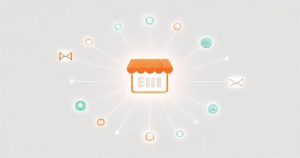In today’s competitive e-commerce landscape, managing an Etsy shop efficiently requires more than just great products. Strategic Etsy integrations empower sellers to automate repetitive tasks, streamline operations, and enhance their overall business performance. By connecting your Etsy store with various third-party applications, you can save valuable time, reduce manual errors, and ultimately focus more on creativity and growth. Understanding the right integrations can significantly transform your selling experience, leading to improved customer satisfaction and increased profitability.
Understanding Etsy Integrations for Enhanced Selling
Etsy integrations refer to the process of linking your Etsy shop with external software and services. These tools work in tandem with your Etsy platform, enabling seamless data flow and extending functionality beyond the native Etsy features. From managing inventory across multiple channels to automating shipping processes and simplifying accounting, integrations are designed to create a more cohesive and efficient operational ecosystem for your business.
The primary purpose of implementing Etsy integrations is to enhance efficiency and scalability. They eliminate the need for manual data entry, reduce the likelihood of human error, and provide a unified view of various business aspects. For any serious Etsy seller aiming to grow their brand, leveraging these connections becomes an indispensable strategy for staying competitive and managing increasing order volumes without becoming overwhelmed.
Key Areas Where Etsy Integrations Drive Value
1. Inventory and Order Management Systems
Effective inventory management is critical for preventing overselling and ensuring customer satisfaction. Integrating your Etsy store with a dedicated inventory management system allows for real-time synchronization of stock levels across all your selling channels. This means if an item sells on your personal website, the inventory count on Etsy automatically updates, avoiding potential stock discrepancies and negative buyer experiences.
Beyond inventory, these systems often include robust order management capabilities. They centralize all your incoming orders from Etsy and other platforms into a single dashboard, simplifying processing, tracking, and fulfillment. This integration significantly reduces the time spent on administrative tasks, allowing sellers to manage a higher volume of orders with greater accuracy and less stress.
2. Shipping and Fulfillment Solutions
Shipping can be one of the most time-consuming aspects of running an Etsy shop. Etsy integrations with shipping solutions automate the label creation process, often at discounted rates from major carriers. These platforms can import your Etsy order details directly, generate shipping labels, and even send tracking information back to your buyers, enhancing transparency and professionalism.
Furthermore, advanced fulfillment integrations can connect your Etsy store to third-party logistics (3PL) providers. This is particularly beneficial for sellers with high order volumes or those selling bulky items, allowing them to outsource storage, packing, and shipping. These integrations streamline the entire post-sale process, ensuring timely deliveries and freeing up seller time for product development and marketing.
3. Accounting and Bookkeeping Tools
Managing finances is crucial for understanding your Etsy shop’s profitability and preparing for tax season. Integrating Etsy with accounting software automates the import of sales data, expenses, and transaction fees. This provides an accurate, up-to-date financial overview without the need for manual data entry, which is prone to errors.
Such integrations allow sellers to easily track income and expenditures, categorize transactions, and generate comprehensive financial reports. This clarity aids in making informed business decisions, understanding profit margins for different product types, and ensuring compliance with tax regulations. It transforms a complex financial task into a manageable and transparent process.
4. Marketing and SEO Enhancement Tools
To attract more buyers, effective marketing and search engine optimization (SEO) are paramount for any Etsy shop. Integrations can connect your store with email marketing platforms, allowing you to build customer lists, send promotional newsletters, and engage with past buyers. These tools help in nurturing customer relationships and encouraging repeat purchases.
Other integrations focus on social media scheduling and product listing optimization. They help analyze keyword performance, suggest improvements for your product titles and tags, and schedule your social media posts to promote your Etsy items. These strategic connections amplify your marketing efforts, increase your shop’s visibility, and drive targeted traffic to your listings.
5. Customer Relationship Management (CRM) Systems
Building strong customer relationships is vital for long-term success on Etsy. CRM integrations allow sellers to track customer interactions, purchase history, and feedback in one centralized location. This comprehensive view helps in personalizing communications, identifying loyal customers, and addressing concerns proactively, which significantly enhances the buyer experience.
By leveraging a CRM, Etsy sellers can implement targeted marketing campaigns, offer exclusive discounts to repeat buyers, and manage customer service inquiries more effectively. This structured approach to customer management not only improves satisfaction but also fosters loyalty, leading to positive reviews and increased word-of-mouth referrals for your shop.
6. Multi-Channel Selling Platforms
Many Etsy sellers expand their reach by selling on other platforms like Shopify, Amazon, or their own e-commerce websites. Multi-channel selling integrations are designed to synchronize product listings, inventory, and orders across all these different marketplaces. This ensures consistent product information and prevents overselling, simplifying complex multi-platform management.
These integrations provide a central dashboard from which sellers can manage all their product data, pricing, and order fulfillment regardless of the sales channel. This unified approach drastically reduces administrative overhead and ensures that your brand presence is consistent across the internet, allowing for seamless expansion and growth into new markets.
Choosing the Right Etsy Integration Strategy
Selecting the most suitable Etsy integrations requires a clear understanding of your business needs, growth aspirations, and current pain points. Begin by identifying which operational areas consume most of your time or frequently lead to errors. Consider your budget, as many effective integrations offer various pricing tiers, including free options or trial periods that allow you to test their suitability.
Evaluate integrations based on their ease of use, compatibility with Etsy’s API, and the quality of customer support. Prioritize solutions that offer robust features, scalability, and positive reviews from other Etsy sellers. A well-planned integration strategy will not only streamline your current operations but also provide a strong foundation for future business expansion.
Maximizing Your Etsy Shop with Strategic Integrations
Embracing Etsy integrations is a strategic move for any seller looking to optimize their operations and scale their business. From automating inventory updates and simplifying shipping to streamlining financial management and enhancing customer relationships, these tools offer unparalleled benefits. They empower sellers to reclaim valuable time, reduce operational complexities, and focus on the creative aspects that make their Etsy shop unique.
By carefully selecting and implementing the right integrations, Etsy sellers can transform their day-to-day operations, improve efficiency, and provide a superior customer experience. This proactive approach to business management is key to unlocking greater profitability and ensuring long-term success in the dynamic world of online crafting and selling.





